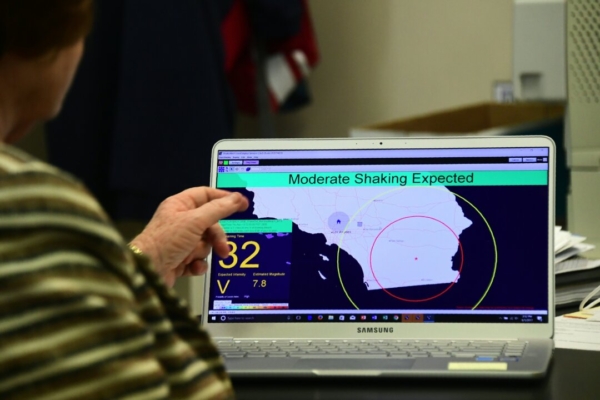Recently, a series of relatively major earthquakes have occurred in Southern California, leaving residents feeling unsettled. However, a seismologist has stated that this does not necessarily indicate that more destructive earthquakes will occur in the near future.
According to data provided by seismologist Lucy Jones from the California Institute of Technology, Southern California, a region known for fatal earthquakes in the past, has experienced 13 earthquakes of magnitude 4.0 or higher this year. In the past 20 years, Southern California has averaged only about 5 earthquakes of magnitude 4.0 or higher per year.
However, over the past more than 90 years since 1932, Southern California has averaged about 10-12 earthquakes of magnitude 4.0 or higher each year. Therefore, Jones posted on X platform on August 13, saying, “The earthquake activity in 2024 is closer to normal levels compared to the calmness of the past few decades.”
Does this mean that a larger earthquake is looming? A spokesperson for Jones stated in an email to Dajiyuan on the 14th that the recent cluster of earthquakes does not necessarily indicate the possibility of larger earthquakes occurring.
The most recent significant earthquake in Southern California occurred on August 12 at 12:20 p.m., with a magnitude of 4.4, centered in Highland Park. The location is about 6 miles northeast of Los Angeles. In nearby Pasadena, a water pipe in the city hall burst, causing water to gush out from the exterior pipes of the building, leading to the emergency evacuation of employees.
Jones posted on X that she was parking at a grocery store at the time and did not personally feel the earthquake in the Pasadena area. However, she pointed out that the location of this earthquake was almost identical to the 3.4 magnitude earthquake that occurred on June 2 and reminded people of a major earthquake decades ago.
Jones said that the earthquake on the 12th appears to have originated from a “shallow-dipping fault, similar to the 5.9 magnitude Whittier Narrows earthquake in 1987.”
Less than a week had passed since the 5.4 magnitude earthquake in the Bakersfield area on August 6, and most areas of Southern California experienced shaking.
The magnitude of this earthquake prompted Los Angeles County Supervisor Kathryn Barger to remind the public to be prepared for earthquakes: “Today’s earthquake is a good reminder that we should take life-saving actions when an earthquake occurs – drop, cover, and hold on.”
Barger also said on social media on the 12th, “This also reminds us that we live in a seismically active region, so we need to be prepared accordingly.”
In January of this year, Mark Petersen, a geophysicist at the U.S. Geological Survey (USGS), stated that California may experience a strong earthquake in the next 100 years, with a magnitude ranging from 6.7 to 7.0. Petersen is a principal author of a study on earthquake activity in the U.S.
He told Dajiyuan at the time, “Our maps clearly show that the probability of a major earthquake in California is very high… it could be within 100 years, or even within 50 years.”
A new technology developed by USGS that utilizes satellite monitoring of surface movements can quickly identify major earthquakes. The ShakeAlert system developed based on this technology is currently being used by agencies in California, Oregon, and Washington to send mobile alerts before earthquakes.
It can also automatically perform actions such as slowing down trains to prevent derailment, or opening fire station doors to prevent them from being jammed shut during earthquakes.
According to USGS, with the addition of sensors from the Global Navigation Satellite System (GNSS), the ShakeAlert system will be able to issue warnings to residents more quickly in the future, and will be able to more accurately determine the magnitude and impact range of major earthquakes.
Robert deGroot, a member of the ShakeAlert operational team at USGS, mentioned in a press release on June 5, “While earthquakes above magnitude 7 are rare, their impact on human life and infrastructure is immense.” ◇

